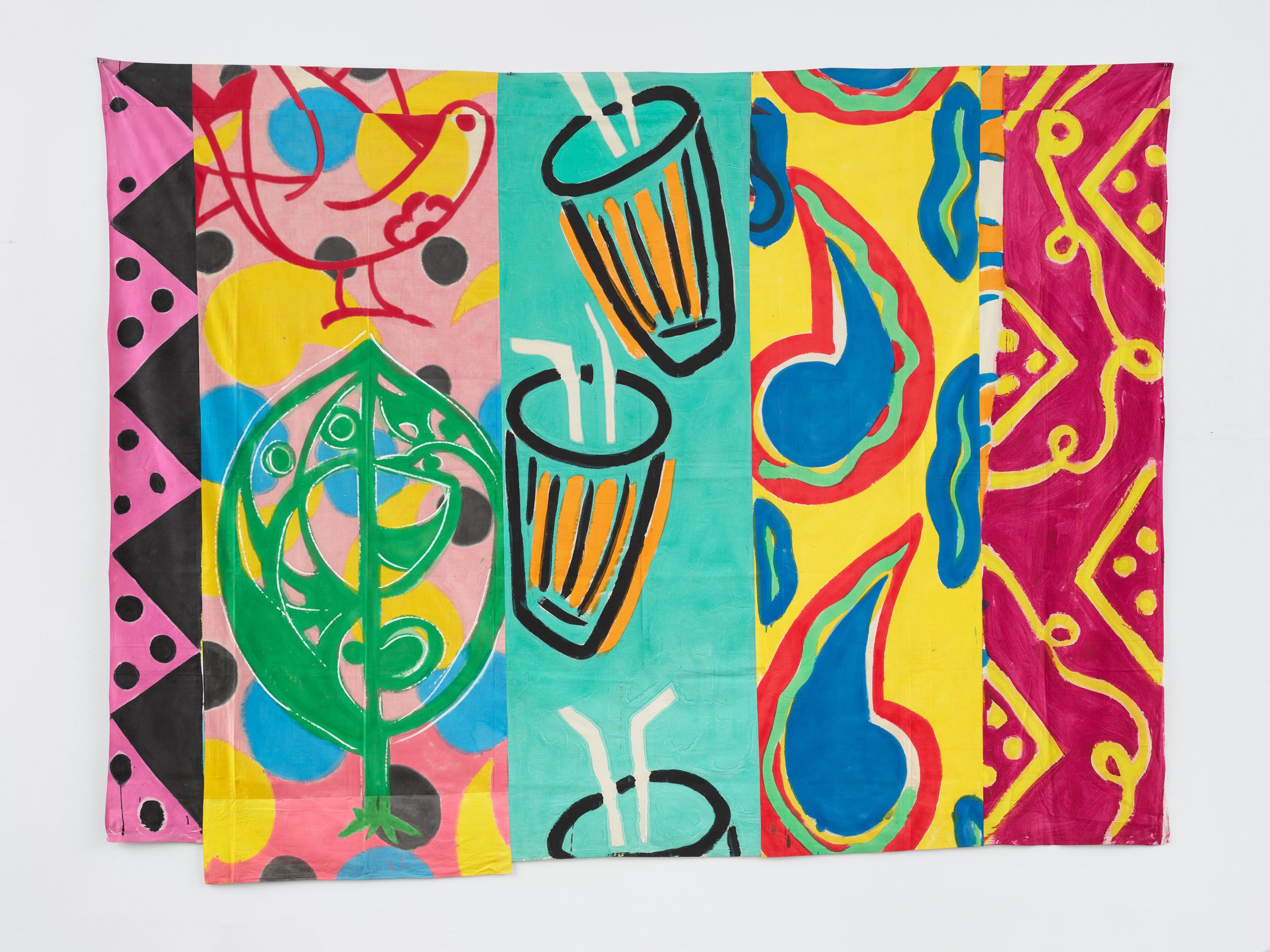A Conversation with||Kim MacConnel (Copy)

Kim MacConnel, Koka Kola, 1981, sewn acrylic painted cotton sheeting, 236.2 x 315 cm. Image courtesy of the artist and Luhring Augustine, New York. Photography: Farzad Owrang.
CG: K1im, you were an influential artist in the Pattern and Decoration Movement of the 1970s. Can you tell us more about your approach to incorporating design elements in your paintings?
KM: Working with design elements, I aimed to make frivolity a fine art. By taking cues from Picasso and the so-called “primitivists,” I tried to make the primitive relevant in various dialogues between cultures.
CG: Many viewers have noted a Cubist influence in your work. How do you respond to that observation?
KM: It's true that my paintings may look influenced by the Cubists, which they are to some extent. However, there is a deeper meaning beneath the surface. This is rooted in the materials I use and the cross-cultural interactions I aim to create through my work.

Patterns, Exhibition View, Luhring Augustine Chelsea, New York, 2024, Photo: Farzad Owrang.
CG: Kim, you were an influential artist in the Pattern and Decoration Movement of the 1970s. Can you tell us more about your approach to incorporating design elements in your paintings?
KM: Working with design elements, I aimed to make frivolity a fine art. By taking cues from Picasso and the so-called “primitivists,” I tried to make the primitive relevant in various dialogues between cultures.
CG: Many viewers have noted a Cubist influence in your work. How do you respond to that observation?
KM: It's true that my paintings may look influenced by the Cubists, which they are to some extent. However, there is a deeper meaning beneath the surface. This is rooted in the materials I use and the cross-cultural interactions I aim to create through my work.

Kim MacConnel, Scientific, 1979, Sewn acrylic painted cotton sheeting, 248.9 x 254 cm © Kim MacConnel; Courtesy of the artist and Luhring Augustine, New York. Photo: Farzad Owrang.
CG: Kim, you were an influential artist in the Pattern and Decoration Movement of the 1970s. Can you tell us more about your approach to incorporating design elements in your paintings?
KM: Working with design elements, I aimed to make frivolity a fine art. By taking cues from Picasso and the so-called “primitivists,” I tried to make the primitive relevant in various dialogues between cultures.
CG: Many viewers have noted a Cubist influence in your work. How do you respond to that observation?
KM: It's true that my paintings may look influenced by the Cubists, which they are to some extent. However, there is a deeper meaning beneath the surface. This is rooted in the materials I use and the cross-cultural interactions I aim to create through my work.
August 2024